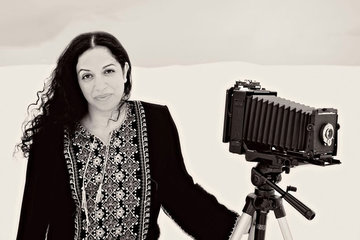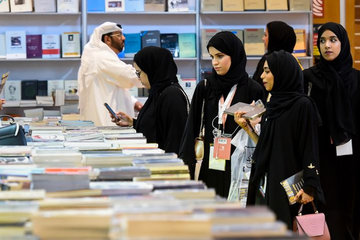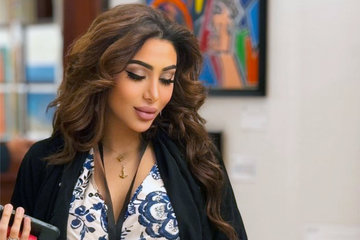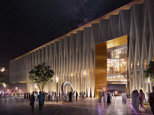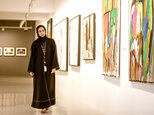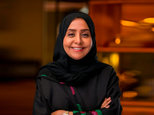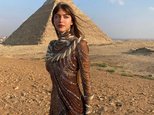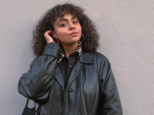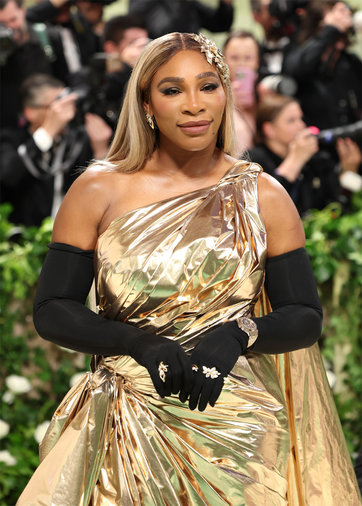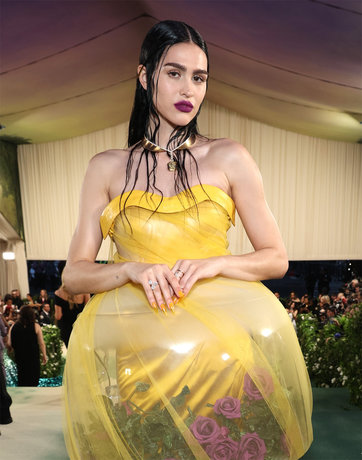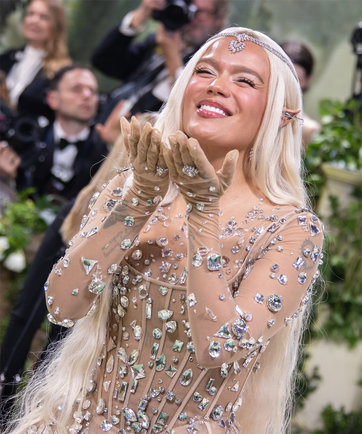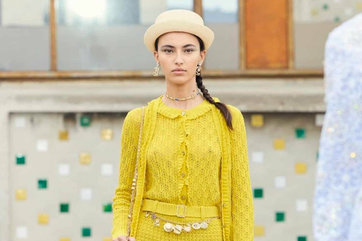
In "Seguir Respirando," Argentinian artist Maria Florencia Carranza takes an unconventional approach to dawning environmental issues. A collection of plastic bags have been morphed into a bacterium-like forms to raise awareness on our consumption's impact on even the smallest organisms.
In Riyadh, a recent exhibition showcased innovative artworks by both Saudi and international artists, who utilized diverse natural materials such as palm fiber, wood, and rubber. The event, known as the second Intermix Residency and themed "Art and Fashion Reimagined," took place in the Jax district in Diriyah, featuring the creations of 15 artists over two days.
This collaborative initiative emerged through a partnership between the Ministry of Culture's Fashion Commission and the Visual Arts Commission. Over 10 weeks, the participating artists, guided by directors and assistants, examined the relationship between fashion and art. Among them was Suhailah Benadim, a Moroccan-American artist living in Riyadh for 17 years. Benadim's project focused on comparing and contrasting Moroccan and Najdi architecture while examining the idea of home from the viewpoint of an individual growing up in a third culture. She handprinted and dyed fabrics using natural ingredients like madder root, logwood shavings, and cutch extract. She employed the Indonesian Batik technique to incorporate motifs inspired by Moroccan and Najdi aesthetics and to construct figurative dwellings within the fabric.

Interdisciplinary artist Tamara Kalo presents “Grounding Alysar,” a performative multimedia video deconstructing the idea of home, displacement, and home creation. The artist used found pieces of fabric to create a rope the length of her childhood compound’s parameters.
Moroccan artist Mohammed Amine El-Makouti integrated fluorescent colors and ultraviolet lights into his project, aiming to dissect the body's relationship with time and space. El-Makouti took cues from Islamic architecture and his cultural background to create layers of dimensionality in his video projections that were influenced by traditional dances.
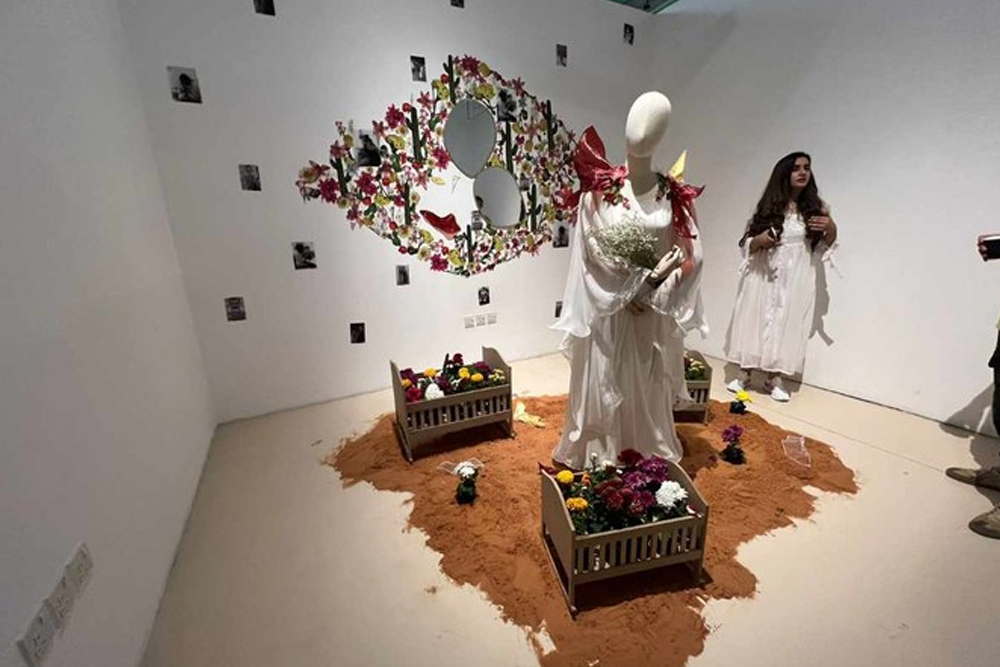
As a textile designer, Khadija Arif presents the hurdles of a new chapter in her life in the shape of a gown titled “Hool,” embellished with the six particular floras grown in the region: Cactus, Lilies, Jasmine, Goldenrod, Marigold, and Baby’s Breath.
Saudi graphic designer Reema Hamad explored the skin's role as a barrier to the physical world and a living canvas for art. Her interactive artwork, created from rubber tree materials, allowed viewers to touch and observe miniature photographs under a microscope, emphasizing the importance of visual art as a means of self-expression.

In “Looking Over,” visual artist and photographer Somaya Fallatah presents a series of self portraits taken as an ongoing process of discovering her Nigerian heritage and culture, one that was shuttered from her growing up within Saudi.
Bashayer Al-Hatmi, a Saudi fashion designer, contributed a piece celebrating the sea life of Farasan Island in Jizan. Inspired by the bead craft of an 85-year-old Farasani woman, Al-Hatmi fashioned a dress from beaded textiles representing the sea's ecosystem, filled with seawater from Farasan Island.
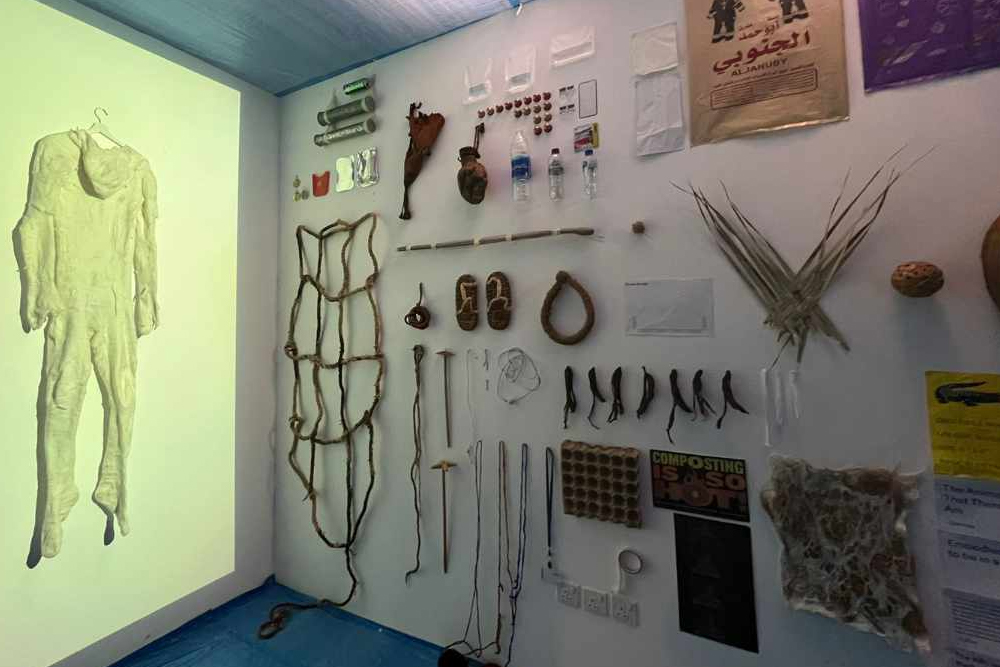
Resident artist Adrian Pepe displays a lifesize caste made of sheep's wool in his artwork "Sheddings," portraying funeral rituals as a form of rebirth.
The Intermix Residency also displayed works by Ismail Odetola, Albandari Aljuaid, Oceane Sailly, Ella Strattmiller, Johanna Stella Rogalla, Somaya Alsayed, Tahra Al-Alshaikh, Nada Qari, Nehal Alaqeel, and Andrea Alkalay.


